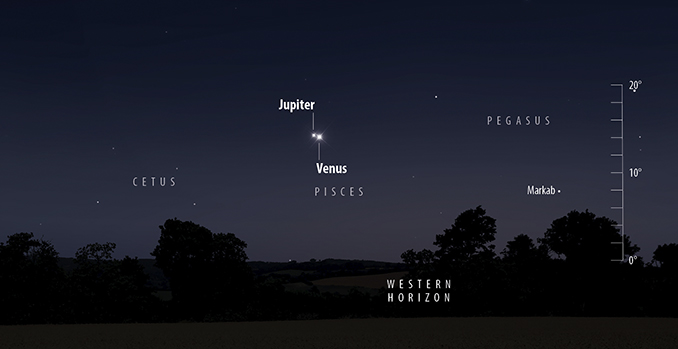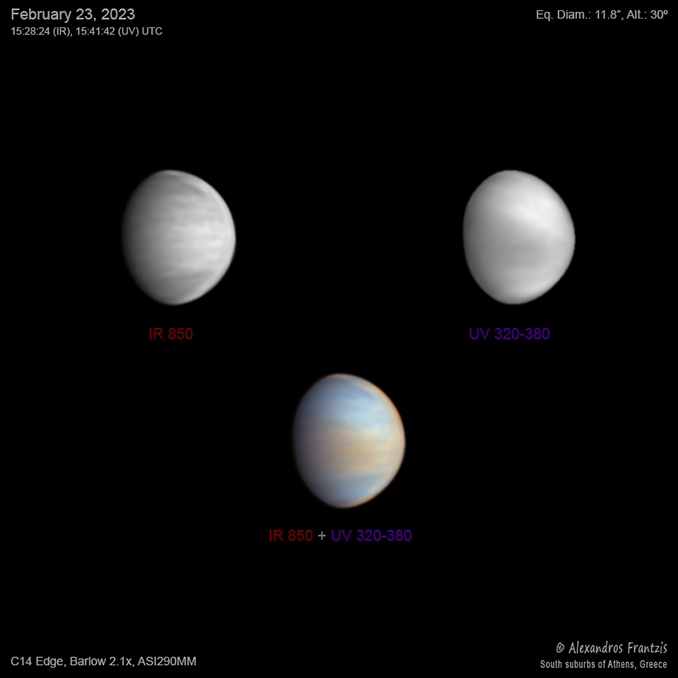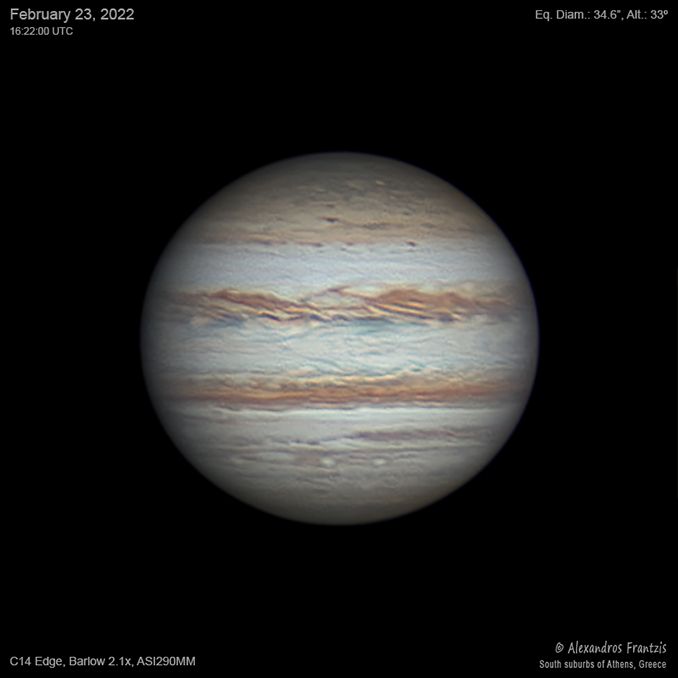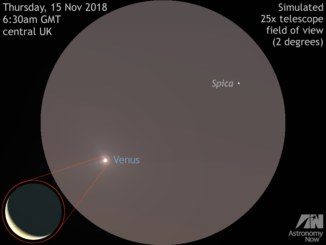
Venus and Jupiter are a marvellous sight soon after sunset on 1 March, when they lie just over a full Moon’s diameter apart. .
All eyes have been fixed on the early-evening western horizon for around a couple of weeks now, watching as Venus and Jupiter, the two brightest planets in the Solar System, have steadily edged closer. We’ve already witnessed the glorious intervention of a young crescent Moon, which gatecrashed the party by splitting Venus and Jupiter on 22 February. The spectacular culmination to this exciting observing event takes place on the early evening of Wednesday, 1 March, when dazzling Venus, appearing significantly brighter, lies around 40 arcminutes west (just to the lower-right) of Jupiter, a distance that’s not too much more than diameter of a full Moon.

There’s always great excitement and anticipation when two of the major naked-eye planets lie close to one another in the sky. Back in December 2020, we witnessed the spectacular coming-together of Jupiter and Saturn, the closest the pair had been since 1623! However, though Venus and Jupiter are over six times further apart than Jupiter and Saturn were on 21 December 2020, this conjunction occurs at a much more favourable altitude and the presence of Venus makes the event so much more attractive, indeed striking.
Shortly after sunset on 1 March, turn your gaze towards the west-southwestern sky and see how long it takes you to spot Venus and Jupiter. Given a haze-free local sky, the pair should be visible with the naked eye mere minutes after sunset. The pair lie around a favourable 25° high across the country. As mentioned above, Venus, blazing away at magnitude –4, appears much brighter than Jupiter, five times brighter in fact than a still brilliant (magnitude –2.1) Jupiter.

Over an uninterrupted horizon Venus and Jupiter you can observe or image them for close to a couple of hours. Indeed, the conjunction is enhanced by a twilight-free sky, as by around 7.30pm GMT in the south of England (progressively later farther northwards to about 7.45pm in Scotland) the sky is astronomically dark. Venus and Jupiter set at 8.30pm and 8.45pm from London and Edinburgh, respectively.

Through a pair of binoculars have Jupiter’s squashed disc can be resolved, and its four Galilean moons, Io, Europa, Ganymede and Callisto, can be viewed. You’ll need a small telescope though to see Venus’ 85.7 per cent-illuminated gibbous disc.
If you are unluckily clouded out on Wednesday evening, don’t worry as the following evening provides nearly carbon copy, as Venus and Jupiter remain almost as close, now separated by around 43 arcminutes with Venus lying above Jupiter.
As March wears on, Venus moves onwards and upwards, steadily becoming better placed in this superb apparition. Unfortunately, Jupiter continues to slide into post-sunset oblivion, on its way to a date with the Sun in April. After around 10 March the pair are too far apart to be framed together in a pair of binoculars.




